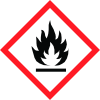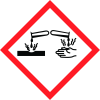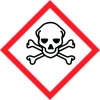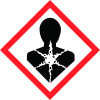F63TX POLANE T with PHX Colorants
THE SHERWIN-WILLIAMS COMPANY
Revision date : 2020-01-10





Note: Ingredients listed on restricted chemical lists
EC/CAS
13463-67-7
Name of the chemical
Reaction mass of titanium dioxide and silver chloride
Concentration
N/A
EC/CAS
108-88-3
Name of the chemical
Toluene
Concentration
N/A
General Information
Revision date
2020-01-10
Product name
F63TX POLANE T with PHX Colorants
1.2.1 Relevant identified uses
Paint or paint related material
Manufacturer Name
THE SHERWIN-WILLIAMS COMPANY
Icons in SDS
Company Information
Company name
THE SHERWIN-WILLIAMS COMPANY
GHS Information
Signal word
Danger
Section 2
SECTION 2: Hazards identification
29 CFR 1910.1200) OSHA/HCS status : This material is considered hazardous by the OSHA Hazard Communication Standard (29 CFR 1910.1200).
2.1 Classification of the substance or mixture
FLAMMABLE LIQUIDS - Category 2 SKIN CORROSION/IRRITATION - Category 2 SERIOUS EYE DAMAGE/ EYE IRRITATION - Category 1 CARCINOGENICITY - Category 1A TOXIC TO REPRODUCTION (Unborn child) - Category 2 SPECIFIC TARGET ORGAN TOXICITY (SINGLE EXPOSURE) (Respiratory tract irritation) - Category 3 SPECIFIC TARGET ORGAN TOXICITY (SINGLE EXPOSURE) (Narcotic effects) - Category 3 SPECIFIC TARGET ORGAN TOXICITY (REPEATED EXPOSURE) (lungs) - Category 1
Ingredient(s) with unknown acute toxicity
3.1%
Signal word
Danger
Hazard statements
Highly flammable liquid and vapor. Causes serious eye damage. Causes skin irritation. May cause cancer. Suspected of damaging the unborn child. May cause respiratory irritation. May cause drowsiness or dizziness. Causes damage to organs through prolonged or repeated exposure. (lungs)
Precautionary statements
General : Read label before use. Keep out of reach of children. If medical advice is needed, have product container or label at hand.
Prevention
Obtain special instructions before use. Do not handle until all safety precautions have been read and understood. Wear protective gloves. Wear eye or face protection. Wear protective clothing. Keep away from heat, hot surfaces, sparks, open flames and other ignition sources. No smoking. Use explosion-proof electrical, ventilating, lighting and all material-handling equipment. Use only non-sparking tools. Take precautionary measures against static discharge. Keep container tightly closed. Use only outdoors or in a well-ventilated area. Do not breathe vapor. Do not eat, drink or smoke when using this product. Wash hands thoroughly after handling.
Response
Get medical attention if you feel unwell. IF exposed or concerned: Get medical attention. IF INHALED: Remove person to fresh air and keep comfortable for breathing. Call a POISON CENTER or physician if you feel unwell. IF ON SKIN (or hair): Take off immediately all contaminated clothing. Rinse skin with water or shower. IF ON SKIN: Wash with plenty of soap and water. Take off contaminated clothing and wash it before reuse. If skin irritation occurs Get medical attention. IF IN EYES Rinse cautiously with water for several minutes. Remove contact lenses, if present and easy to do. Continue rinsing. Immediately call a POISON CENTER or physician.
Storage
Store locked up. Store in a well-ventilated place. Keep cool.
Disposal
Dispose of contents and container in accordance with all local, regional, national and international regulations.
Supplemental label elements
DELAYED EFFECTS FROM LONG TERM OVEREXPOSURE. Contains solvents which elements can cause permanent brain and nervous system damage. Intentional misuse by deliberately concentrating and inhaling the contents can be harmful or fatal. WARNING: This product contains chemicals known to the State of California to cause cancer and birth defects or other reproductive harm. Adequate ventilation required when sanding or abrading the dried film. If Adequate ventilation cannot be provided wear an approved particulate respirator (NIOSH approved). Follow respirator manufacturer's directions for respirator use. DELAYED EFFECTS FROM LONG TERM OVEREXPOSURE. Abrading or sanding of the dry film may release Crystalline Silica which has been shown to cause lung damage and cancer under long term exposure. Please refer to the SDS for additional information. Keep out of reach of children. Do not transfer contents to other containers for storage.
2.3 Other hazards
None known.

